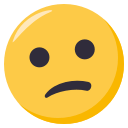Events & Promotions
|
|

GMAT Club Daily Prep
Thank you for using the timer - this advanced tool can estimate your performance and suggest more practice questions. We have subscribed you to Daily Prep Questions via email.
Customized
for You
Track
Your Progress
Practice
Pays
Not interested in getting valuable practice questions and articles delivered to your email? No problem, unsubscribe here.
- Nov 22
11:00 AM IST
-01:00 PM IST
Do RC/MSR passages scare you? e-GMAT is conducting a masterclass to help you learn – Learn effective reading strategies Tackle difficult RC & MSR with confidence Excel in timed test environment - Nov 23
11:00 AM IST
-01:00 PM IST
Attend this free GMAT Algebra Webinar and learn how to master the most challenging Inequalities and Absolute Value problems with ease. - Nov 25
10:00 AM EST
-11:00 AM EST
Prefer video-based learning? The Target Test Prep OnDemand course is a one-of-a-kind video masterclass featuring 400 hours of lecture-style teaching by Scott Woodbury-Stewart, founder of Target Test Prep and one of the most accomplished GMAT instructors.
Kudos
Bookmarks
B
Be sure to select an answer first to save it in the Error Log before revealing the correct answer (OA)!
Difficulty:
 35%
(medium)
35%
(medium)
Question Stats:
74% (01:58) correct 26%
(02:08)
wrong
26%
(02:08)
wrong  based on 1114
sessions
based on 1114
sessions
History
Date
Time
Result
Not Attempted Yet
(A) \(\frac{1}{16}\)
(B) \(\frac{1}{8}\)
(C) \(\frac{3}{16}\)
(D) \(\frac{1}{4}\)
(E) \(\frac{1}{2}\)
Attachment:
Circles.JPG [ 15.13 KiB | Viewed 15721 times ]
Originally posted by BrentGMATPrepNow on 12 Feb 2020, 17:26.
Last edited by BrentGMATPrepNow on 14 Dec 2021, 17:09, edited 2 times in total.
Last edited by BrentGMATPrepNow on 14 Dec 2021, 17:09, edited 2 times in total.
Kudos
Bookmarks
HKD1710
APPROACH #1: Apply geometric properties
Let's start by assigning a "nice" value to the radius of the smallest circle.
Let's say the blue circle has radius 1

If the blue circle has radius 1, then the DIAMETER of the blue circle must be 2.
This means the radius of the green circle must be 2

If the radius of the green circle is 2, then the DIAMETER of the green circle must be 4.
This means the radius of the red circle must be 4

Area of circle \(= \pi r^2\)
So, the area of the red circle \(= \pi (4^2) = 16\pi\)
And the area of ONE blue circle \(= \pi (1^2) = \pi\)
So, the area of TWO blue circles \(= 2\pi\)
What fraction of the largest circular region is shaded?
Answer \(= \frac{2\pi}{16\pi} = \frac{1}{8}\)
Answer: B
------------------------------------------------------------------------------
APPROACH #2: Visual estimation
IMPORTANT: the diagrams in GMAT problem solving questions are DRAWN TO SCALE unless stated otherwise.
So, if we don't know how to answer a particular question, we can always use this helpful property to eliminate some answer choices by simply "eyeballing" the diagram.
We can see that the 2 shaded circles occupy less than 1/4 of the largest circle.
This allows us to eliminate answer choices D and E
Likewise, it looks like the 2 shaded circles occupy more than 1/16 of the largest circle.
So, we can also eliminate answer choice A.
So, without performing any calculations whatsoever, we're left with answers choices B and C.
Those are pretty good odds if you weren't sure how to answer the question in the first place
Answer: B
General Discussion
Kudos
Bookmarks
have no idea if my solution is correct  how is it possble to find fraction if i dont know radius
how is it possble to find fraction if i dont know radius 
anyway i assigned some random values
let diamertre of large circle be 12, so radius is 6
hence diametre of smaller circle be 6 and radius is 3
Area of large circle 36
Area of two smaller circles is 18
so \(\frac{18}{36}\) i.e. = \(\frac{1}{2}\)
IMO: E
anyway i assigned some random values
let diamertre of large circle be 12, so radius is 6
hence diametre of smaller circle be 6 and radius is 3
Area of large circle 36
Area of two smaller circles is 18
so \(\frac{18}{36}\) i.e. = \(\frac{1}{2}\)
IMO: E










